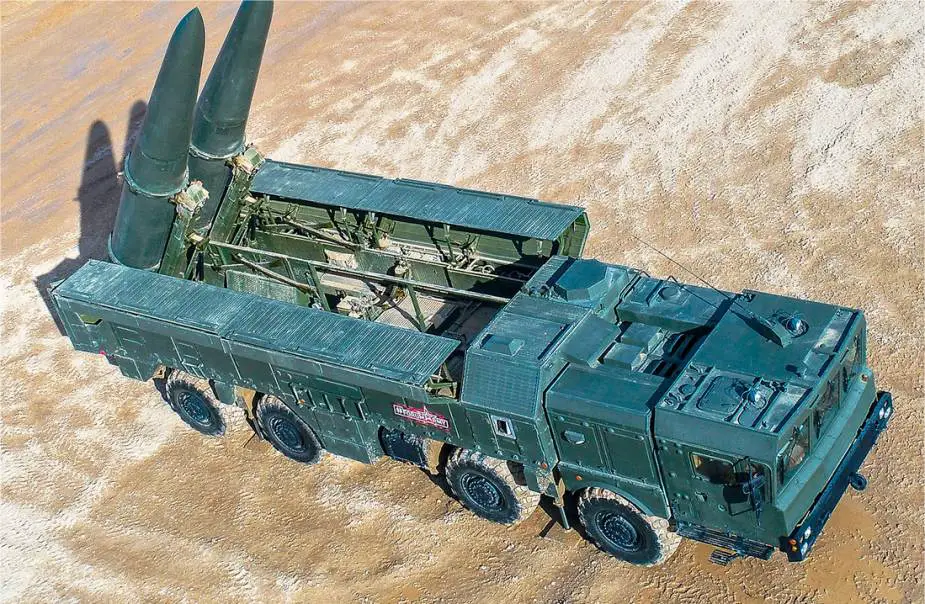According to information published by the Russian defense industry on October 25, 2022, the Iskander-M (NATO reporting name: SS-26 Stone) tactical missile system can be equipped with new missiles, which will enhance its combat capabilities, said Valery Kashin, the Deputy CEO of the High-Precision Systems Company and General Designer of the Machine-Building Design Bureau Hero of Labor.
Follow Army Recognition on Google News at this link

The Iskander-M carries two tactical ballistic missiles. (Picture source Russian Social Network)
Citing information from the Russian defense industry, the infrastructure that was created for the Iskander system will probably serve for 30 years, depending on the situation that will change. But at the same time, I think we will work to enhance its combat capabilities, first of all, by integrating new and more advanced missiles,” he said on the Zvezda TV channel.
Currently, the Iskander-M is widely used by Russian troops to conduct strikes against Ukrainian armed forces and critical targets. In August 2022, The Russian Defense Ministry Spokesman Lieutenant General Igor Konashenkov said that the Iskander-M had directly hit a military train in the Dnepropetrovsk Region and destroyed several military equipments and combat vehicles of the Ukrainian army.
The Iskander-M is designed to eliminate missile and multiple launch rocket systems, long-range artillery systems, command posts, communication centers, as well as planes and helicopters at airfields at a distance of up to 500 km (311 mi). The Iskander-M system has been operational with the Russian Armed Forces since 2014. Russian missile units were fully rearmed with the system in late 2019.
The Iskander-M is a mobile ballistic missile based on an 8x8 military vehicle chassis. It carries two solid-propellant single-stage guided missiles, model 9M723K1. Each one is controlled throughout the entire flight path and fitted with an inseparable warhead. Each missile in the launch carrier vehicle can be independently targeted in a matter of seconds.
The Iskander-M missile flies at a hypersonic speed of 2100–2600 m/s (Mach 6–7) and an altitude of 50 km. The missile weighs 4,615 kg, carries a warhead of 710–800 kg, has a maximum firing range of 500 km and achieves a circular error probable (CEP) of 5–7 meters (when coupled with optical homing head; 30–70 m in autonomous application














